Enrollment professionals know the value of personalization- we’ve been doing it since the first days of mail merge and print-on-demand viewbooks. Today there’s a web-based personalization tool for every goal and every budget. If you don’t have the budget (or the bandwidth) to invest in one of the big software platforms, you’re not missing out. You can use the tools you have to develop a personalization strategy that delivers on your enrollment goals.
This article focuses on the top three high-value, low-cost web based personalization actions you can take towards the goal of student engagement and enrollment, at every stage of the student journey.
Personalization depends on data
Before jumping in, let’s review data types.
1. Implicit data: Data your website and analytics collect passively, without user input.
Ex: Geographic location (IP address), referral link, page views and browser behavior
2. Explicit data: Data your users actively provide through RFI forms, applications, or account settings
Ex: name, email address, program interests, etc,
3. Third-party data: Data that comes from 3rd party sources
Ex: ads networks, name buys from search services, and CDPs (customer data platforms)
I like to say data is everywhere. You are probably already collecting a lot of it. In fact, you might be collecting data you’re not even aware of because it’s hiding out in your GA4 dashboard or on an ads platform like Facebook Business Manager. Part of building your personalization strategy is knowing where to look, and collecting all the data you can get your hands on to understand your audiences.
Persona-based content strategy
Before you think about adding any kind of tool to your web workflows, take a look at your web content strategy. Think of this one as personalization low-hanging fruit. A research-informed content strategy designed to meet key user goals is almost like self-personalization- your users find what they need (and are more likely to convert) quickly because you’ve already mapped out the journey for them.
Here are examples of page paths and conversion funnels for three different enrollment audience segments:
Segment 1: First-Year Student
- Homepage > Degree Program > Student Life
- CTA: RFI
- Journey phase: top of funnel
Segment 2: Graduate Student
- Degree Program Page >Admissions Requirements >Meet the Faculty
- CTA: Ready to Apply?
- Journey phase: mid-Funnel
Segment 3: Undergraduate Parent
- Landing Page > Admissions Requirements> Financial Aid
- CTA: Contact Us
- Journey phase: top of funnel
There are two ways to pursue an audience-based content strategy. One way is to invest in research-informed user personas, which are one of the highest-value strategic initiatives you can undertake. But they’re a significant investment. So if you’re on a budget, ad hoc personas are a great alternative. You can build them in house from what your internal stakeholders already know about your users, and you can use them to:
- Optimize conversion funnels based on personas’ decision-making criteria
- Prioritize features or designs
- Tailor content
- Focus messaging
- Help content creators build audience empathy
- Build stakeholder consensus and align mental models
Learn more about the steps towards building personas in our article Ad Hoc Personas.
Dynamic content blocks within your content management system (CMS)
A content management system (CMS) is your website’s control panel—where you create, update, and organize content to meet your audiences’ needs. Depending on your CMS, you might already have some powerful, no-additional-cost personalization tools included, just waiting to be set up.
Did you know that some CMS can be configured to:
- Show returning users to a campus visit page a personalized pop-up prompt to schedule a visit?
- Serve an “Apply Now” CTA to a user who has visited a degree program page more than three times?
- Invite a user with a Los Angeles, California IP address to “Join us for an admissions event in Santa Monica”?
- Detect the user’s program of interest and display a relevant student testimonial upon return visits
- Remind students to “finish your application” if they visited and abandoned it?
How does it work? A Modern CMS reviews incoming user data, and uses personalization rules that you write, to deliver different page content to users who meet that rule criteria. Your team only needs to set the rule once. An example of a simple UI-based CMS rule would be if user is in XX region, display this homepage CTA.
These modern CMS platforms (Drupal, WordPress, Sitecore, etc.) offer personalization modules:
- Drupal: Smart Content module
- WordPress: WP Engine GeoTarget
- Sitecore: Built-in personalization engine
- Adobe Experience Manager: Dynamic content components
Here’s an example of how your CMS can help you re-engage with students who have started their application, but didn’t finish it.
- Student clicks “start application”
- CMS or CRM redirects them to your application system
- Analytics tracks rules (User reached application step 1, User did NOT reach application confirmation page within __ days)
- Analytics creates an audience: “application started, not completed”
- CMS recognizes the audience through a cookie, CRM tag or UTM parameter
- Personalized content triggers (Homepage Hero “Not Done Yet? Finish Your Application” and CTA Button: “Resume My application”)
You might be asking yourself, “this sounds complicated, can we do this in-house?” The answer is yes! Anyone on your web team familiar with your CMS UI can use the point-and-click personalization tools built in, with no code required.
The tactics above don’t require additional tools beyond your personalization module CMS, your Google Analytics 4 account or a CRM like Slate. But they do require some upfront time and effort to set up. The plus side to this is that your team has complete control over each personalization tactic, and can adjust based on performance. If you try out some ideas and find that some are driving real results, you could use that as rationale to invest in a bigger personalization tool when your budget allows.
Email might be the most powerful and budget-friendly personalization tool of all. Once a prospective student shares their email, name, and interests, and you assign them a user persona, you have everything needed to send targeted messages that nurture a decision.
Let’s distinguish between enrollment segments and personas, because they’re not the same. Segments group users by data points like enrollment classification (first-year, transfer, graduate). This helps you target messaging. Personas go deeper, reflecting motivations, behaviors, and pain-points to create content that resonates emotionally.
Using both ensures your emails reach the right people (segments) while speaking to their real needs and concerns (personas), building trust and engagement.
Here are two use cases for email personalization:
Email Newsletters & Journeys
- After RFI submission, a user can be added to an automated email journey that offers additional program info and other helpful resources. These journeys typically last several weeks and include calls–to-action like “meet with an admissions counselor” or “schedule a virtual campus visit”.
Automated transactional emails
- Any time a user takes a meaningful action on your website, an automated email or SMS message can be sent through your CRM.
- Examples:
- A thank you email after an action
- Confirmation email after event sign-up
- A text message reminder about an up-coming virtual event
- Examples:
Conclusion
Personalization is about understanding your audiences, and using the tools available to you to have meaningful conversations that meet their goals and build belonging with your institution. We love the DIY approach as a starting point because it allows you to learn the most about your audiences, and build your strategy one step at a time. Any tactic you pick can lead to big gains, so start small, track your progress and keep building.
Looking for a broader perspective on personalization? Read How to Personalize Web Content in Higher Ed

Robynne is NewCity's Enrollment Strategy Director. She has 26 years of higher education experience within diverse colleges and universities.

